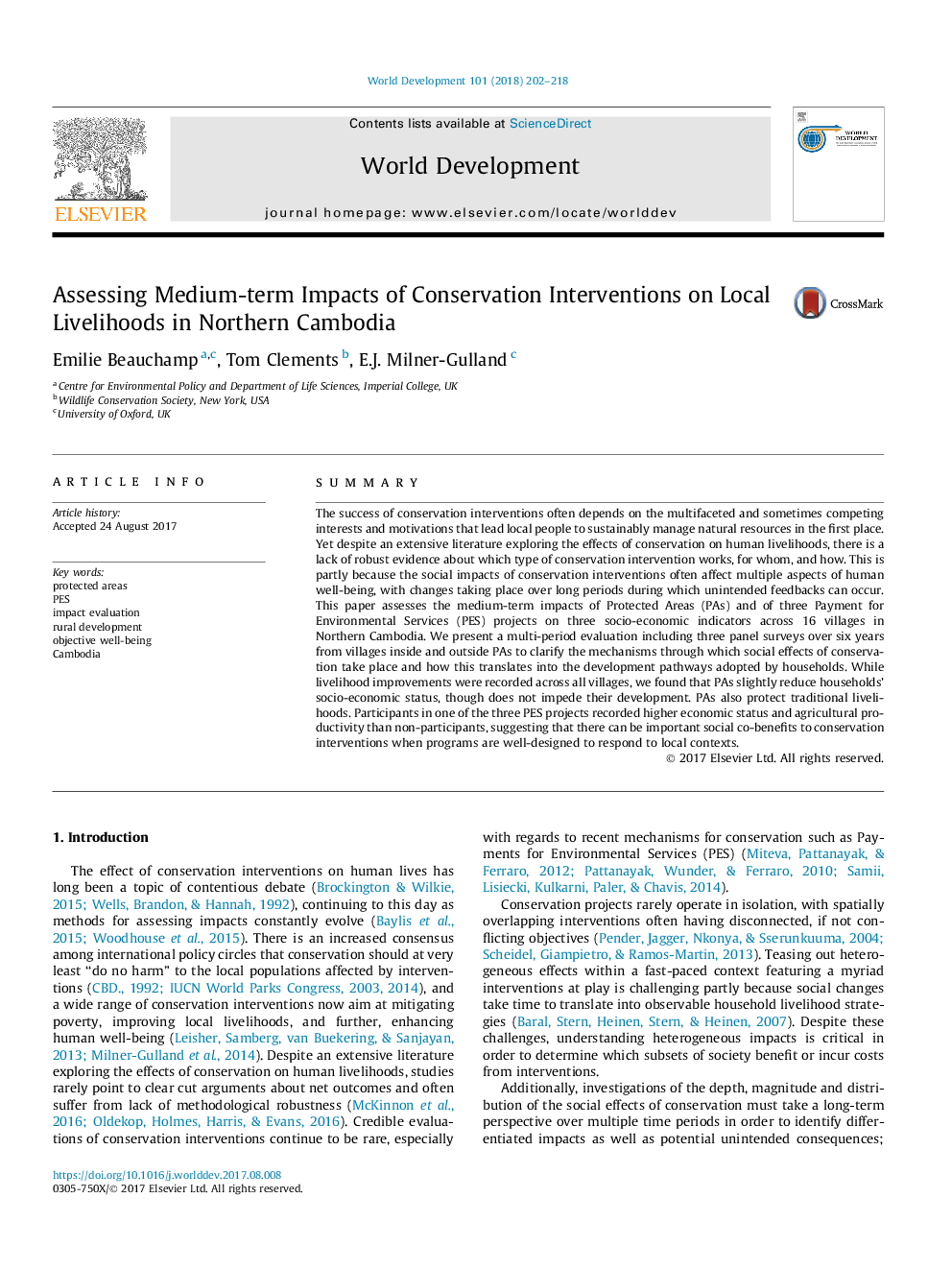ترجمه فارسی عنوان مقاله
ارزیابی تأثیرات مداخله حفاظتی در مورد معیشت محلی در کامبوج شمالی متوسط مدت
عنوان انگلیسی
Assessing Medium-term Impacts of Conservation Interventions on Local Livelihoods in Northern Cambodia
| کد مقاله | سال انتشار | تعداد صفحات مقاله انگلیسی |
|---|---|---|
| 160070 | 2018 | 17 صفحه PDF |
منبع

Publisher : Elsevier - Science Direct (الزویر - ساینس دایرکت)
Journal : World Development, Volume 101, January 2018, Pages 202-218

